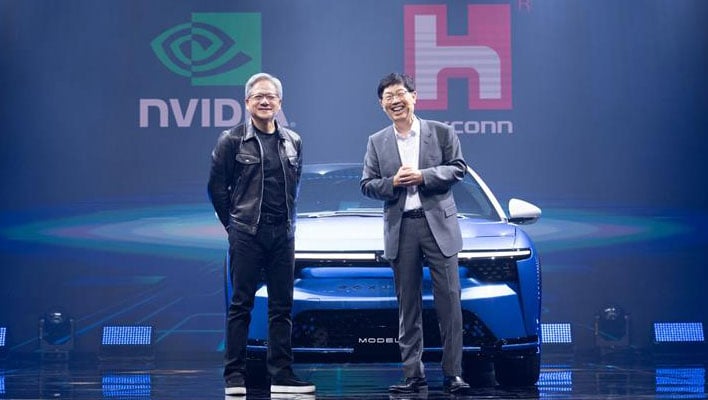NVIDIA Joins Forces With Foxconn To Build AI Factories, A New Class Of Data Centers

NVIDIA and Hon Hai Technology Group, otherwise known as Foxconn, jointly announced plans develop a new class of data centers and systems designed to "accelerate the AI revolution." It's the latest strategic move by NVIDIA to capitalize on the burgeoning market for AI hardware and applications, where the firm has positioned itself as a leader with key investments.
There was a time when NVIDIA could be considered primarily a gaming GPU company. While gaming GPUs are still an important foundational piece to NVIDIA's bottom line, the bulk of its revenue now comes from the data center. In fact, NVIDIA's most recent earnings report highlighted a massive 171% year-over-year and 141% sequential growth in data center revenue, to more than $10.3 billion. Meanwhile, its gaming GPUs pulled in around $2.5 billion last quarter—impressive but a distant second to the data center.
NVIDIA's expanded partnership with Foxconn is fairly widespread. The new crop of so-called AI factories will focus on everything from digitalization of manufacturing and inspection workflows, to AI-powered electric vehicles and robotics platforms. Language-based generative AI services are also on the map.

"A new type of manufacturing has emerged—the production of intelligence. And the data centers that produce it are AI factories," NVIDIA CEO Jensen Huang said in a statement. "Foxconn, the world’s largest manufacturer, has the expertise and scale to build AI factories globally. We are delighted to expand our decade-long partnership with Foxconn to accelerate the AI industrial revolution."
Foxconn will tap NVIDIA's rich lineup of advanced CPUs and GPUs to create and operate its own AI factories, optimized with NVIDIA AI Enterprise software. Some of the products Foxconn is expected to employ include HGX reference designs featuring eight NVIDIA H100 Tensor core GPUs per system, GH200 Superschips, OVX reference platforms, and networking solutions.

There's no singular product at play, though the two firms did make it a point to talk about developing AI-powered EVs using NVIDIA's DRIVE platforms—specifically, DRIVE Hyperion 9, a next-gen platform for autonomous automotive fleets, and DRIVE Thor, NVIDIA's future automotive systems-on-chip, or SOC).
"Most importantly, NVIDIA and Foxconn are building these factories together. We will be helping the whole industry move much faster into the new AI era," said Foxconn Chairman and CEO Young Liu.
The upcoming DRIVE Thor superchip taps advanced AI capabilities that were first introduced in NVIDIA's Grace CPUs, as well as its Hopper and Ada Lovelace GPU architectures. According to NVIDIA, we can expect some 2,000 teraflops of high-performance compute out of DRIVE Thor.
Meanwhile, DRIVE Hyperion 9 is the latest modular development platform and reference architecture for autonomous vehicles. Powered by DRIVE Thor, it will integrate a sensor architecture capable of level 3 urban and level 4 highway driving scenarios.
The joint effort on AI factories will also play out beyond EVs, such as autonomous mobile robots that can travel several miles per day, assembly robots, and more.

